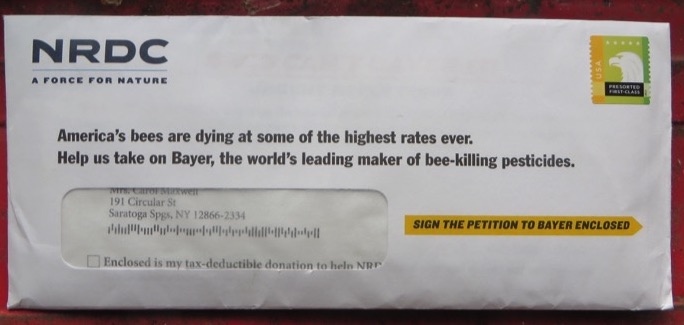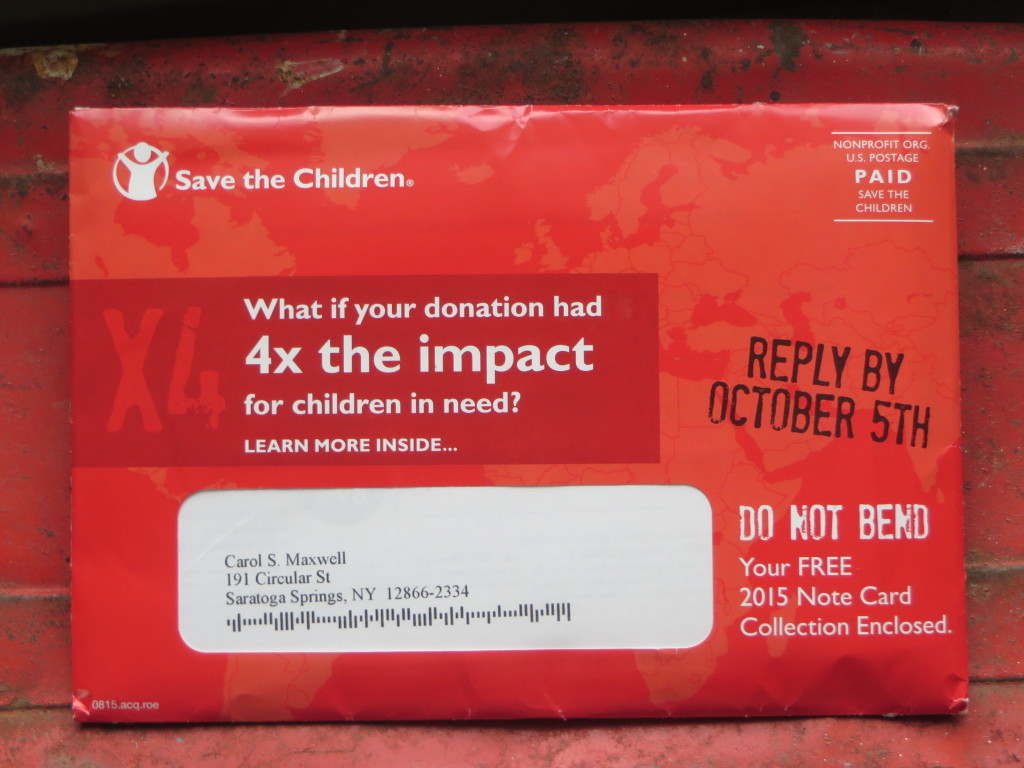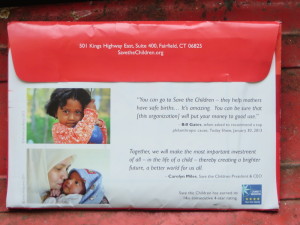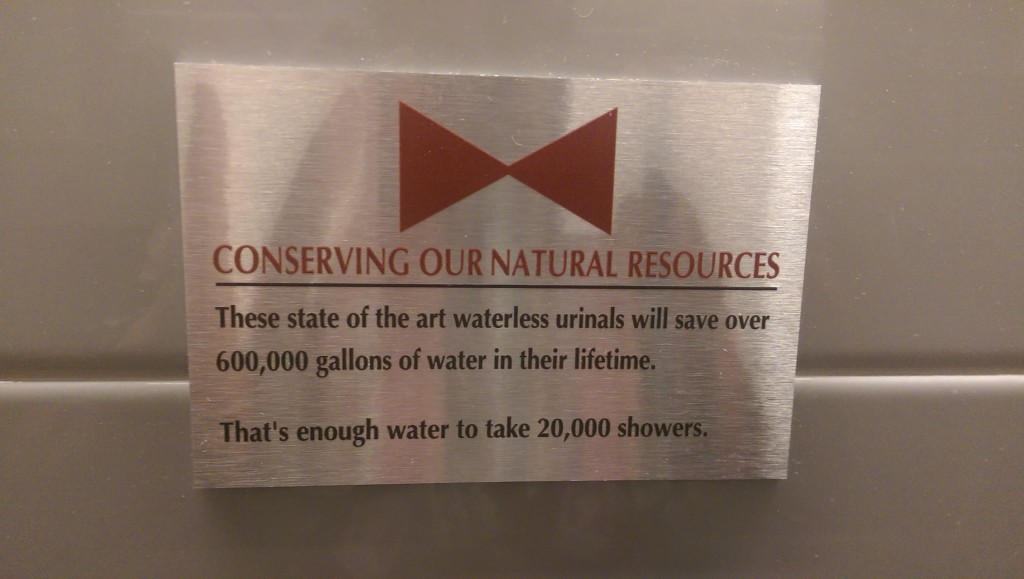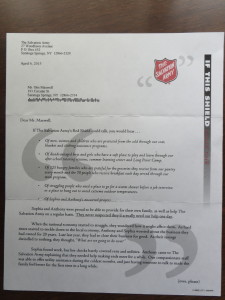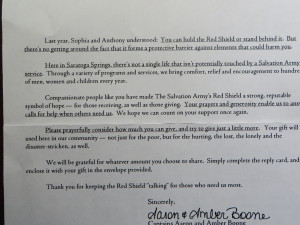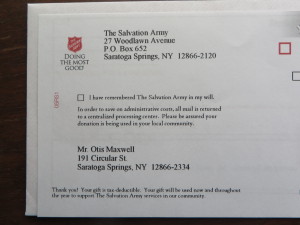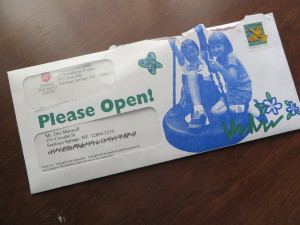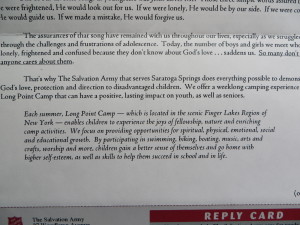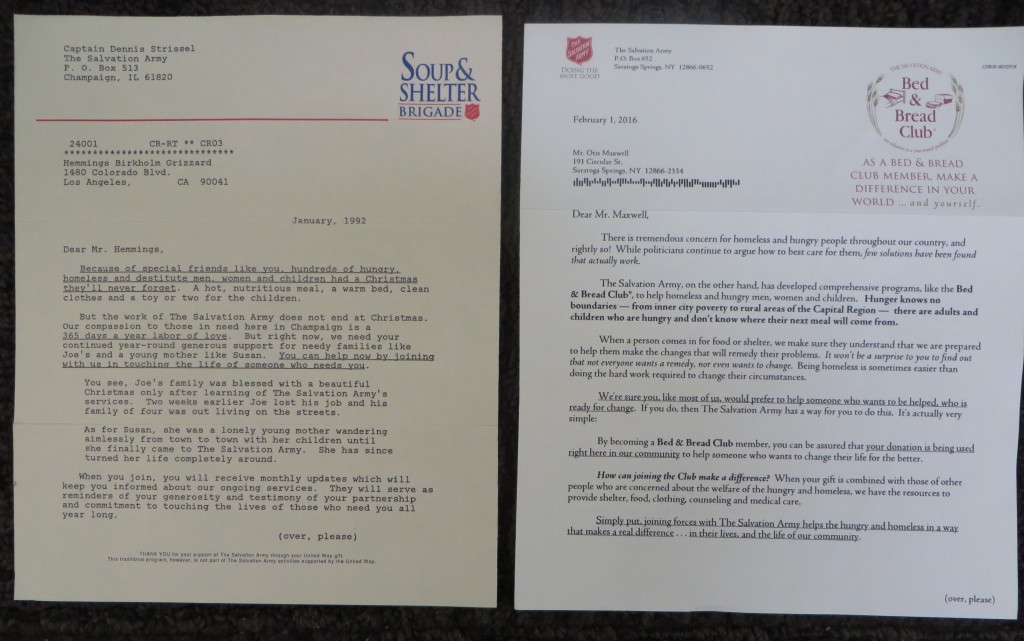
25 years ago I wrote a planned giving direct mail program for the Salvation Army. I recently received the current rendition of the same ask, and it was fascinating to see what has changed and what hasn’t. I’ve reproduced the letters from the two packages, which contain the key message, and you can read them by clicking on the images.
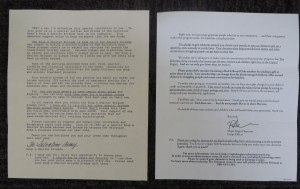
In both cases, the program appeals to high value donors and asks them to make a small regular contribution to fund community kitchens and shelters on a year-round basis. The vast majority of the Salvation Army’s donations come in fourth quarter, partly because of tax planning but also because holidays (Thanksgiving and Christmas) are a time when Christian donors are particularly sensitive to the needs of people less fortunate than themselves. The letters are sent in first quarter to people who made generous donations over the holidays.
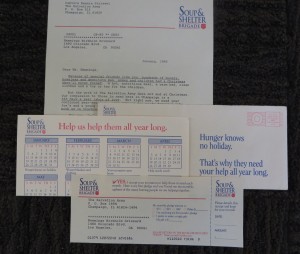
My pitch was called the “Soup and Shelter Brigade”. It thanks the reader for their generosity and paints a word picture of “a Christmas they’ll never forget” which they made possible. It goes on to present the year round need and provides two vignettes of people like the ones you’ll be helping—good people who have fallen on hard times, usually through no fault of their own.
The vignettes are important because we’re going to send you more vignettes each month as part of the program—here’s who you are helping this month. The monthly mailing is a reminder and a request for the pledged donation, since this was before the days when automatic credit card billing was an accepted practice.
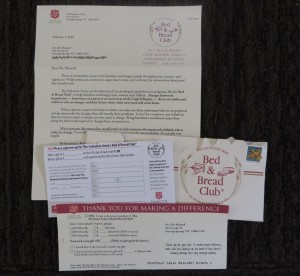
The new package is from the “Bed & Bread Club” and has a hard edge that surprised me—not to say it’s not successful. “Not everybody wants a remedy, nor even wants to change. Being homeless is sometimes easier than doing the hard work required to change their circumstances… We’re sure you, like most of us, would prefer to help someone who wants to be helped who is ready for change.” And the letter goes on to promise that your gift will be used to support this cohort.
So this is appealing to a donor who is fed up with the ineffectiveness of social programs…. Possibly because “while politicians continue to argue how to best care for them, few solutions have been found that actually work.” It’s an exhortation to take things into your own hands that leans as much on frustration as Christian charity.
I’ve also attached photos of the complete packages (minus the return envelopes, which were blank in both packages). Mine includes a calendar with a theme for each month to illustrate the ongoing need “Bed & Bed Club” has TWO remit forms, one a standard ask and the other an authorization for automatic credit card billing. This makes me think the auto billing is a test which will be rolled into the main form if it works.
If it still works as in my day, local Salvation Army corps have access to several direct marketing agencies who offer them prepared promotions to choose from and then localize (mine isn’t localized because it’s an agency sample). “Bed & Bed Club” was the choice of the Capital District corps, and that’s really all I know about it. I hope it’s working, but I also hope (and believe) people still give out of compassion as much as frustration.
